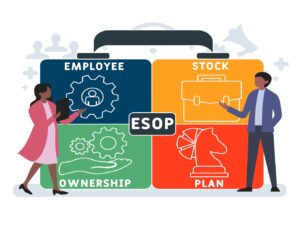Running a successful startup business comes with quite a few challenges. On top of creating a business plan and building a customer base, organizations need to address supplier risk and spend risk across the entire organization. While risk management is an ongoing, detailed process, keeping track of vendors and potential spend risk doesn’t need to be difficult. It merely requires developing a supplier risk assessment strategy, knowing the typical risks associated with third-party vendors, and spending more time/energy on addressing possible risks in a timely manner. Here are a few steps for managing supplier risks and developing a risk management plan for your business:
Why you need a supplier risk assessment strategy
Risk (especially third-party risk) is only increasing for most businesses today. A combination of factors–including privacy issues, fraud, and cybersecurity concerns–are causing increased incidents with third-party vendors/suppliers. Additionally, the economy is changing and regulators are applying significantly more pressure on companies to manage vendors more appropriately. Third parties can potentially affect your organization’s reputation negatively through poor service, bad labor practices, environmental problems, or damaged inventory. Worse, they can have a volatile impact on your financials or create a situation where your organization isn’t complying with local laws or regulations. Developing a risk management strategy is essential to protecting your organization’s finances, customers, and overall operation.
Understanding third party risk
Third-party risk itself is a simple concept. It’s merely the analysis and managing of third-party service providers, suppliers, and vendors. Suppliers can gain access or be privy to any aspect of your business, including customer information and organizational data. Risk isn’t entirely related to a vendor’s actions or performance. It can be introduced into the supply chain in a number of ways. Sometimes unexpected events or disasters may cause problems along the supply chain.
A cyberattack on one of your suppliers can do a great deal of harm, compromising your company’s data in the process. Ultimately, a lack of attention to detail regarding your suppliers can lead to trouble in the future, so it’s prudent to develop your risk management methods sooner, rather than later. Spend risk visibility is another crucial aspect of managing risk, so keeping a keen eye on rogue spending or other issues should be a major component of your risk assessment plan.
Constantly monitor vendor performance metrics
So what goes into effective risk monitoring? It all starts with identifying likely risks involving third parties by monitoring their past performance. Review their service level agreements and compliance requirements to help ensure quality service, adherence to regulations, and a transparent relationship. Key performance indicators (KPIs) and due diligence are practical tools for monitoring vendor performance over time.
You’ll also want to continuously monitor vendors for changes in their environment, regulations, and industry standards. Using third-party risk management effectively puts all of a vendor’s collected information on a scorecard that you can use to make effective decisions for future interactions. In doing so, supply chain managers can make quick decisions about invoicing or other transactions and get a quick snapshot of information about the vendor’s past performance.
Use advanced risk assessment scoring
When planning your approach to risk assessment, consider how a supplier’s reputation and past behavior will impact your business by scoring them based on different metrics. Develop a risk profile by classifying vendors using risk scores. This can cover how they access and interact with your organization and scores covering a few crucial performance areas. These include:
- Judicial scores
- Diversity scores
- Financial scores
- Sentiment and Reputation
- Customer Service
- Data Privacy
- Environmental
- Regulatory compliance
Combining insights from multidimensional scores can give you a better idea of the big picture. If you use software to handle risk scoring, you can reap the benefits of automation with handy suggestions for attenuating spend/third-party vendor risk.
Implement supplier risk management software
The final—but likely most important—step is to partially automate the process by utilizing supplier risk management software. The benefits of a software solution for risk assessment are numerous. Most businesses don’t perform regular risk assessments on their vendors. Sometimes, they only check once or twice per year!
With advanced risk scoring, you can assess risk much more often without worrying about unexpected long-term changes or unknown variables. The software handles that function, and more. Whether you want a vendor’s history at the push of a button or want to stop an invoice payout with in-flight transaction control, vendor management/risk assessment software can help you manage risk effectively over a long period of time.









